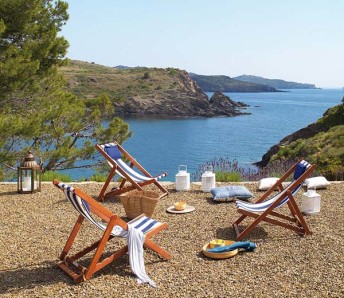
The outlook for many Spanish industries is much improved as the country strides confidently into summer.
There is a tendency among certain industries to focus solely on the positives and ignore the – potentially damaging – negatives when it comes to reporting the news. But when it comes to Spain, and particularly Spain’s property industry, all signs right now point to one thing, and one thing only: optimism.
Having spent years if not in, then certainly renting a shabby place next door to, the doldrums, Spain’s property market has charted a course towards prosperity over the past 24 months, delivering steady data showing how prices first bottomed out and then began to rise; how mortgage lending was loosened and offered once more at favourable rates; how foreign buyers flush with cash were tempted back to the market, and how even domestic demand returned strongly, fuelled by an improving job market and economic situation…
And in recent months these trends have converged to a point where there is little but good news ahead for Spain’s real estate industry, with many experts predicting steady price increases for at least five years. The potential fly in the ointment that was the Brexit worry appears to have subsided for now, and supporting figures emanating from the wider economy and the tourism sector appear to show that the future is indeed very bright for Spanish property.
Last week EU statistics agency Eurostat revealed how Spanish property prices were rising faster than the eurozone average, while the Economy Ministry later confirmed that one-third of the €22 billion in foreign cash spent in Spain in 2015 was poured into the construction industry.
And if these figures were not encouraging enough, Sunday saw Economy Minister Luis de Guindos revise upwards his 2016 forecast for the Spanish economy as a whole. The Minister is confident that Spain’s GDP will increase by 2.9% this year, up from an earlier prediction of 2.7%.
“New macroeconomic projections, which would be a first step prior to the elaboration of a future budget by the (next) government, point to a stronger growth rate of 2.9% in 2016,” de Guindos said. Looking ahead to 2017, a wider eurozone slowdown would only have a minimal impact on growth, he added, projecting further GDP growth of around 2.4%.
Adding to his positivity was a report at the weekend by the Institute of National Statistics (INE) that revealed the number of tourists visiting Andalucía over the past 12 months has increased 18.1% year-over-year.
This increase represented the highest rise across all of Spain’s autonomous communities, and strengthened claims that the region – the Costa del Sol in particular – was in for a booming summer. In May, the Costa del Sol welcomed around one million visitors, while the entire summer period is likely to break last year’s record number of visitors, potentially rising close to seven million.
So while much of Europe appears to be wrestling with the gloom of post-Brexit economics or the doom of persistent terrorism threats, Spain has many reasons to be cheerful this summer.
 en
en



 Vlaams-Nederlands
Vlaams-Nederlands
0 Comments
Leave a Comment
DISCLAIMER
The opinions and comments expressed by contributors to this Blog are theirs alone and do not necessarily reflect the views of VIVA Homes Under the Sun Ltd, any of its associated companies, or employees; nor is VIVA to be held responsible or accountable for the accuracy of any of the information supplied.
Have you got something to say?